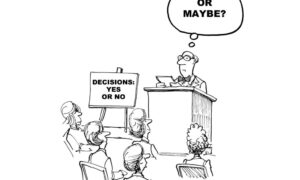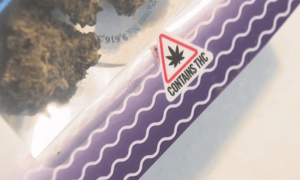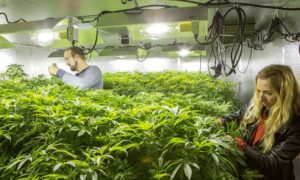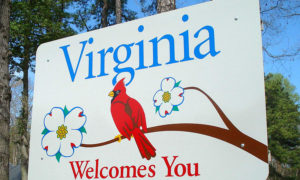California Cannabis Tenant Improvements: Top 7 Issues

Our friends at Harris Bricken take a look at renting and leasing property in California
Author: Griffen Thorne
Every single business that wants a cannabis license in California needs to buy or lease property, because licenses are tied to properties. Cannabis businesses usually opt for leases rather than purchases given the uncertainties in getting licensed or succeeding in business, and sometimes capital constraints.
As part of the licensing process, state and local agencies require that the real estate (the premises) has certain security features and other features, which will in most cases necessitate some kind of buildout. For what it’s worth, I’ve worked with a ton of cannabis businesses and can’t recall a single time where improvements weren’t required. In this post, I’m going to look at what I believe are the seven most important issues cannabis tenants face with respect to tenant improvements.
#1 Cost
When I talk to people who want to start cannabis businesses, one of the first things I will tell them is that it’s going to cost a lot. And generally, the most expensive part of the process is the buildout. In some cases, only modest improvements are required but in the most cases major redesigns are required. We’ve seen businesses spend millions of dollars or even build facilities from the ground up.
In fact, one of the more common financing types of deals we work on are loans or investments made to a cannabis business to assist with completing tenant improvements. Cannabis businesses that are starting from scratch need to fundamentally understand the cost of making improvements and to decide whether they will need third-party funds and how they will structure those deals (check out a post of mine here about different types of investments and loans).
#2 Time
The next thing I tell cannabis startups is that this process will be slower than watching paint dry. Forget about cannabis agencies taking their sweet time to review applications– the buildout is usually the longest part. If a building needs more than a few cosmetic changes, the buildout will take at least a few months, and it’s not uncommon for them to take more than a year or even multiple years.
There are a lot of factors at play here: CEQA issues, land use approvals, types of changes that need to be made, pulling the right construction and other similar permits, availability of parts in the supply chain, and the contractors being used. Any of these factors can cause the process to take a very long time, and in tandem it can be even slower. No two buildouts are the same.
#3 Landlord Approval
A lot of cannabis tenants seem to gloss over their own leases when making changes to the premises. This is a bad idea. Almost any lease that’s worth its salt is going to have aggressive landlord controls over changes to the premises. Most things need to be approved by the landlord and in some cases the landlord has a ton of discretion that can affect the tenant’s ability to get its work done.
A tenants who on top of its game will often work out at least some of the anticipated changes to the premises before executing a lease and even prepared an exhibit with permitted work. Some tenants even go the extra mile and get the landlord to commit to performing some work (after all, if the premises is in bad shape, it benefits everyone to fix it, and I’ll discuss that point more in #5 below).
#4 Ownership of Improvements
To explain this issue in detail, I have to use some legalese. First off, there is a difference between real property (real estate) and personal property (tangible property like cars, machinery, clothing, goods, etc.). Generally, personal property that is brought into a leased premises is owned by the Tenant and remains owned by the tenant. However, the problem comes when personal property is attached to or built into the premises.
Without getting too far into the legal weeds, there is a difference between: a) making improvements or alterations that change the character of a premises or become fundamental parts of it, on the one hand (for example, building a wall or staircase), and b) personal property that is affixed to the premises that can be easily removed without substantially affecting the property. This type of personal property is commonly known as “trade fixtures” (think of some kind of machine that can be removed without affecting property).
Leases generally spend a decent amount of time defining alterations/improvements (which are generally not removable and become part of the property unless the landlord says otherwise) and trade fixtures (which can generally be freely removed and remain the tenant’s property). Failure to property define these things can lead to all sorts of disputes.
As a caveat here, the rules I mentioned in the prior paragraph are not set it stone. Some leases give landlords security interests in trade fixtures or even equipment and inventory in the event that a tenant defaults (there are a lot of thorny issues here for cannabis companies especially if a landlord tries to get a security interest in a tenant’s cannabis inventory which is not allowed). And most leases will specify that if the lease is terminated and the tenant leaves property in the premises, the landlord can keep it and sell it or destroy it.
As one other caveat. Although I mentioned the general rule that improvements become part of the premises and owned by the landlord, there are some pretty interesting issues that can arise for cannabis tenants given the very special machinery some of them need. Cannabis businesses often use HVAC and other odor filtration systems that are much more sophisticated than your run-of-the-mill HVAC systems (and much more expensive). We’ve seen a lot of leases where tenants will want to keep their HVAC equipment, though much of the time that’s considered an alteration that becomes part of the property. This is yet another reason for tenants to be cautious in leases.
#5 Tenant Improvement (TI) Allowances
Sometimes landlords will agree in a lease to contribute some amount (usually fixed) towards the tenant’s improvement of the property (often referred to as a tenant improvement allowance or TI allowance). The rationale is best explained by this example: a tenant wants to rent out a suite in a multi-tenant building to do cannabis cultivation but needs to upgrade the building’s electricity to get enough juice. This upgrade benefits the landlord who can have more electricity available at the building. So the landlord may agree to contribute some money to help out– especially where the landlord may realize depreciation (tax) benefits.
In all, TI allowances can be a huge benefit to cash-strapped cannabis businesses for obvious reasons. If a landlord will not agree to cover the TI bill, a tenant may be able to persuade the landlord to at least front those costs initially, and amortize them over the lease term along with other sums payable.
#6 Tax Issues
In some cases, improvements to property can lead to tax reassessments on a property and, as a result, higher property taxes. Leases will often put at least part of the tax obligation onto the tenant making the improvements, which does not seem controversial in many cases. However, there can be a lot of negotiation around these increases (especially in multi-tenant properties where one tenant’s improvements could theoretically impact taxes on the whole property). This is yet another consideration a cannabis tenant will need to make, as it’s virtually guaranteed that they’ll be making improvements. Landlords must also carefully consider any potential tax impacts of improvements on their property.
#7 Regulatory Issues
In California (and I’m assuming in all other states that regulate cannabis too), the regulators keep very tight control over changes to the premises. Any and all changes need to be approved by regulators before they are made. To be clear, this is in addition to the requirement to get building and other construction permits. Cannabis regulators will not allow mostly any change to the premises that affects it without pre-approval. This can be a host of things–throwing up walls or doors, changing the use of rooms or spaces within rooms, etc. If a regulatory inspector drops in and the premises does not match the diagram the agency has on file, well, that won’t end well.
In sum, there are a lot of factors at play that make cannabis leasing challenging for both landlords and tenants. You can read more about them in some of our prior posts below:
- Cannabis Leases: Eight Important Tenant Considerations
- Cannabis Leases: Six Important Landlord Considerations
- The Perils of Bad Cannabis Leases
- California Cannabis Landlords: More Regulatory Snags to Avoid
- California Cannabis Leasing: Landlord Pitfalls
- California Cannabis Leasing: The Normalization of Cannabis Landlords
- California Cannabis Leasing: Federal Enforcement Is Not The Only Concern
- California Cannabis: Commercial Leasing Changes in New Emergency Regulations
- California Approves First Commercial Cannabis Landlord Insurance Coverage
- California Commercial Cannabis Leasing: Top 5 FAQs
- California Commercial Cannabis Leases: Planning in a Time of Uncertainty
- California Cannabis: In 2018, Resolve to Make Your Leases Better
- California Commercial Cannabis Leases: Will Courts Enforce Them?
- California Cannabis Leases: Five Keys to Doing Them Right
- California Cannabis Leases: The 101
- Navigating California Cannabis Leases in 2019
- The Biggest Pitfalls of California Cannabis Leases in 2019
- Top Five Suggested Revisions to California Form Leases for Cannabis Tenants
- Cannabis Real Estate Leases: The Roots of Your Cannabis Business, Part 1
- Cannabis Real Estate Leases: Lease Audit and Lease Abstracts
- Marijuana Lease Checklist: Ten Things to Note
- Marijuana Commercial Leases: This Industry Is Different, You Know
- Oregon Cannabis: Leases Galore
Source: Canna Law Blog




































